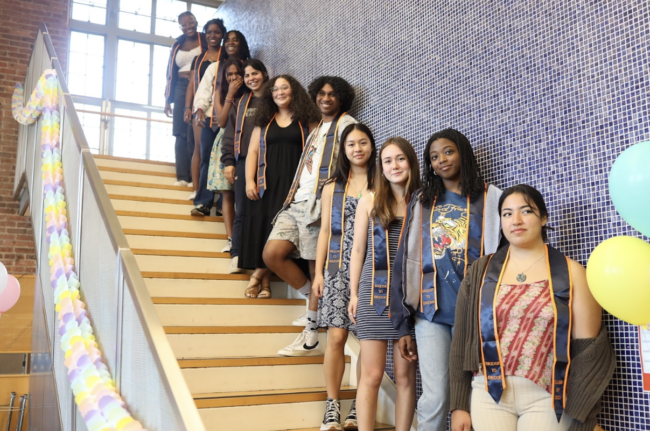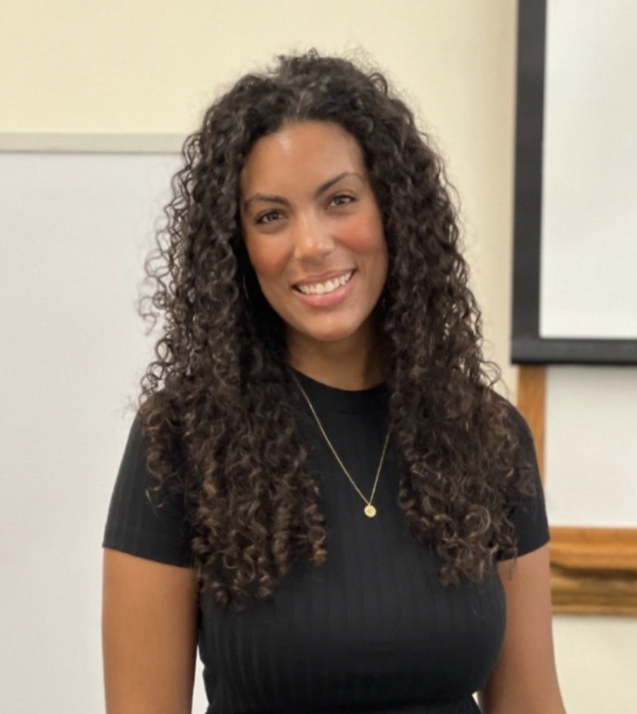This year “Bridge to Bridge,” Fieldston’s student of color mentorship program, has made a successful resurgence into the community of color in the upper and middle school, and into the life of the school. Bridge to Bridge is a year-long student mentorship program that is intentionally exclusive to middle and upper school students pairing middle school and freshman mentees with their upper school mentors.
The defining factor in the Bridge to Bridge program is the intentional age gap between mentors and mentees. Pairing up younger students with older students allows for a more special bond to be made: Mentors have inevitably spent more time at Fieldston and have more experience navigating the challenges of being a student of color. “One of the things we want to do with this year is to try to be more engaging, to allow us to be a support system for our mentees, to be someone they can talk to about anything they need,” said Sharjah Bodji, a current mentor and Form lV student at Fieldston. The mentors are able to give them wisdom and knowledge they have learned about being a minority at a “Predominantly White Institution.” “Being a mentor, you are trying to build the bridge, while being a mentee you are walking on the bridge,” said Sharjah.
But how are the mentor-mentee pairs made? Prior to the official start of the program, faculty advisors, Janet Pugh and Mercedes Robinson sent a form to all the students signed up for Bridge to Bridge in order to gain more knowledge about the individuals, an essential part of making good mentor-mentee fits. This form asks questions that not only relate to a student’s ethnic and racial identity but also about their hobbies, interests and passions.“We really try to connect the kids based on more than just their identifiers and those intersections of the identifiers, but also their interests.”
“If you’re in the mentoring program, what does that mean for a Latina student who loves to write poetry? And how can we find support for that student within the school?” said Ms. Robinson. In a society where people of color are often seen as being defined only by their race, Bridge to Bridge pairs students through the various aspects that make up one’s identity.
Bridge to Bridge is predominantly student-led, with the additional support of faculty. “The children really take charge of everything,” said Ms. Robinson. The students decide how the program will be run this year and what activities will be held. In the past, Bridge to Bridge has taken field trips, in-school field trips, and much more. “We are always open to doing things like that, but we want the students to come forward and be like, ‘Hey, this is what we want,’” said Ms. Robinson.
How and what Bridge to Bridge looks like is solely based on the involvement of the student leaders and mentors, and the current mentors have a true passion for the program. “This year, I feel like the mentors very much want to do it, they want to be involved, and they want to make sure these middle schoolers and freshmen have a support system,” said Sharjah. Having a good experience as a mentee serves as motivation to be a good mentor once they are put in that position. The older students want to make sure they give their mentees the same support they got when they were younger, and the cycle continues to repeat for years and years for students of color to come.
“The main goal at the end of [the program] is building community and support through one another, and building that harmony between other people of color who you can really identify with,” said Ms. Robinson. Bridge to Bridge is an extremely special program and the entire Bridge to Bridge community is excited about the profound bonds that will be made this year.








